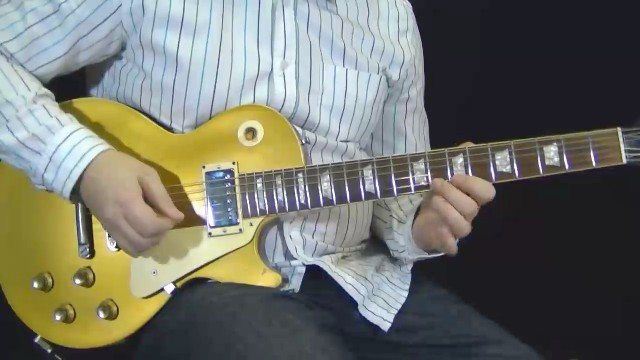Welcome to this tutorial on Lateral Pentatonic Tapping: Connecting The Boxes.
These examples will help you to start thinking in several boxes at the same time when playing two-handed pentatonic stuff. And that does not only apply when playing boxes adjacent to each other, but also even more so when your hands are spread far apart, several boxes apart even.
To able to get the most out of these exercises you do need a firm grasp of all the pentatonic shapes, in all keys, all across the fretboard. If you feel that you are not quite there yet, I suggest you back track and practice the exercises in my Unlocking the Fretboard and Pentatonic Finder tutorials.
With that said, let’s begin. The first exercise we will do is a descending tapping pattern in Amin pentatonic, using the same Box 1 in both hands. This will feel comfortable for most, and should be pretty easy to overcome. Octave stuff is also very cool sounding, in any scale or key. Even if you are playing the same box in both right and left hand, try to think at the two shapes simultaneously in your mind.
In ex 2 however, we will use box 1 in our left hand, but box 5 in our right hand. This will present you with the key obstacle in this kind of playing. Now your hands play different pattern. And not only that, but as you left hand moves in a four fret spread, you right hand will move in a three fret spread. When playing this descending pattern you will most likely find that if you focus on your right hand box, your left hand will tend to adjust when you change from three to four fret spreads, “tracking” your right hand. In some cases so much so, that you end up playing box 5 in both hands.
Then again, if you focus on the left hand box, you might find that your right hand shape goes out the window. As we are in the pentatonics, you will easily hear when this starts to happen. The key here is to focus not on one but BOTH boxes/shapes at the same time. Not an easy thing to do at first, but it will come with practice. Eventually though you will find that one hand/shape takes the lead, and the other just tags along for the ride, BUT still within its box. This is OK, and is to be expected. Me myself, I often let my right hand lead my playing, and trusting that my left hand does the right thing almost subconsciously.
With those two down, do try this with ALL boxes in your right hand. You’ve done box 1 and 5 already, now go do box 4,3 and 2 in your left hand, all the while keeping your left hand in box 1. Once you’ve done with that, move on to part 2.


















